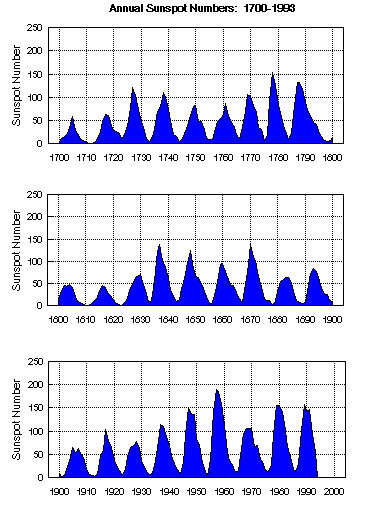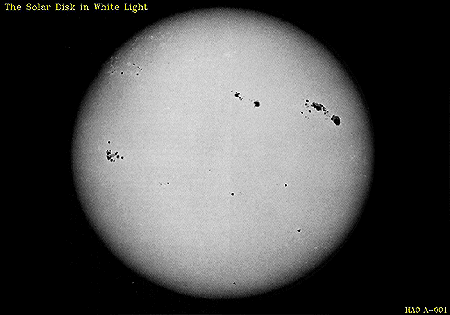


The inner part of a Sunspot is very dark and is called the umbra, the Greek word for shadow. The lighter region surrounding the umbra is known as the penumbra. A good view of the umbra and the penumbra can be seen in the granulation photo from the previous page.
A Sunspot's life can be as short as an hour or two or as long as several
months. The number of Sunspots that can be seen on the surface of the Sun
increases and decreases in a regular pattern, known as the solar cycle,
with a maximum number of Sunspots occurring every 11 years.
